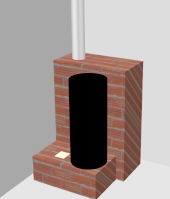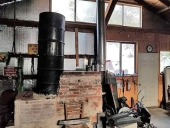posted 1 year ago
I built most of the shell of my Walker stove using refractory mortar which is rated up to 950°C (about 1750°F) I've a feeling that inside the core it could get hotter than that.
The core I put together with clay/sand in about a 1:3 mix, which is what Matt recommends. I've also used that for the top couple of layers of brick on the shell, a) in case it gets hot enough that it's an issue, which I doubt but mainly b) so that if I need to I can get it apart.
If you use cement based refractory mortar it bonds much harder to the brick, which means you won't be able to take it apart should you want to, or not at all easily.
However, this thread handily allows me to pose my own mortar question:
I've found the adhesion of the clay mortar to the bricks once it's dried out to be much lower than cement-based mortar. It is also prone to shrink when it dries, especially thick lumps of it. The adhesion issue came to light when I tried to drill into a brick which was fixed with clay mortar to fit one of the door hinge points, the vibration of the drill knocked the brick loose. I had to finish drilling it and then re-stick it in place.
Has anyone got a way to increase the bond strength of clay/sand mortar to brick? I foresee the possibility of recurring repairs, for example in the brick top surround to the hotplate, which might get knocked and the bricks loosened.
Obviously it's not yet been lit, as it's not finished so I don't know whether once it's been heated and thus dried more the mortar gets harder or more secure.
Austin Shackles : email anshackles"at"gmail.com.







